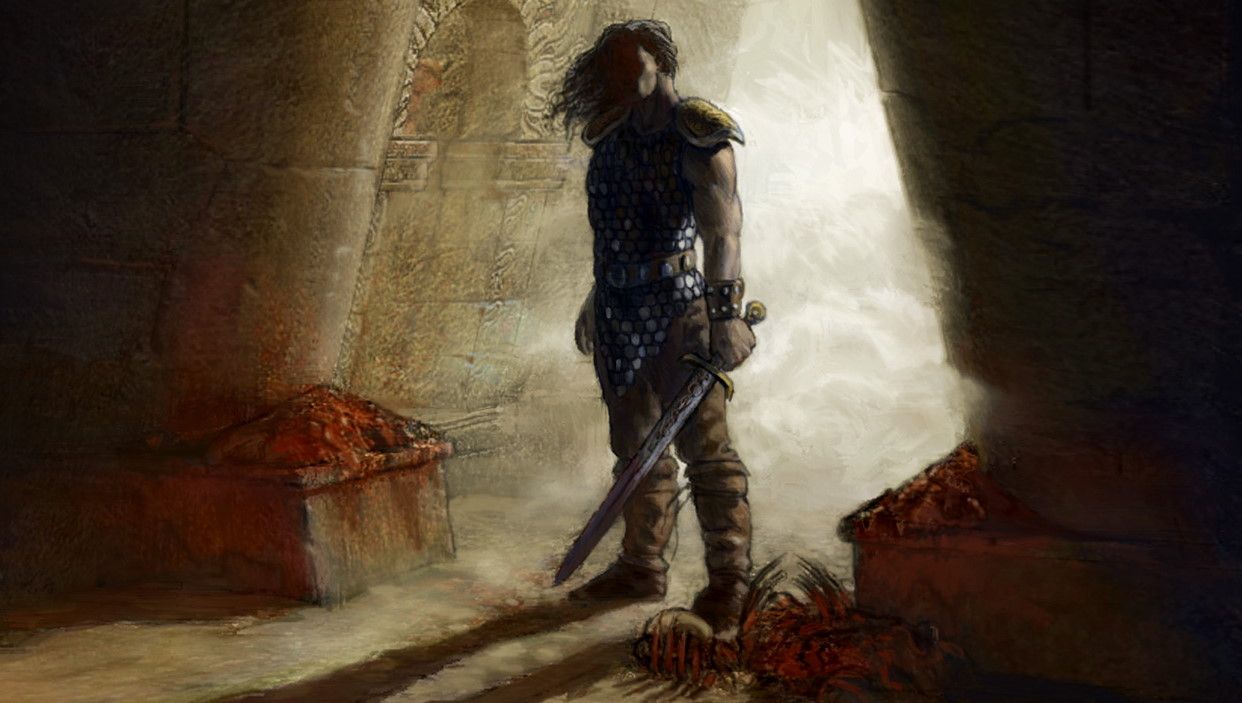Arx Fatalis’ Magic Was Ahead of Its Time and Technology
The game’s immersive yet clumsy magic system could have been saved by the Wiimote

I will be as blunt as a hammer with you: I barely remember Arx Fatalis’ plot. It must have been noteworthy because people are still talking about it in 2023. Arkane Studios’ beloved role-playing game bridged genres and paved the way for gems like Dishonored and Prey. Arx Fatalis had a fairly unique setting, complete with a dying sun to set the mood. But what really managed to burrow into my mind was its frustrating magic system. Some of you may call it inventive and immersive in comparison to today’s button-mashing followed by random numbers flying off foes. But as a child, it was infuriating.

The sheer variety in Arx Fatalis’ underground-level design is remarkable for a title that’s nearly two decades old. I still remember making a pie with dough and water using a crafting system that made me feel invested in the game’s world. An open class system further drove home a sense of immersion. But the magic was admittedly the coolest part of your skill set. When it worked, the results were spectacular.
Arx Fatalis lets you mix and match about 20 runes to devastating effect. You could use these tools to bolster your defenses or interact with the environment. For instance, you could detect traps or fake walls and torches could be lit from afar. The runes themselves also made sense from a logical point of view. A line from left to right meant “create”; flip it and it became “negate.” A line drawn from the bottom up meant “improve”; invert it and it became “reduce.” Night vision meant using the “improve” and “sight” symbols. Arx Fatalis’ magic system delivered organic growth as the player remembered rune combinations over time. Even enemy magic users could be seen drawing runes in the air. Secret rune combos replaced cheat codes with a healthy serving of novelty.
You’d think that a kid would have had bigger problems with unforgiving stealth mechanics or the absence of a quest arrow telling you where to go. But nope, the magic system is what really drove me nuts. The problem? You couldn’t click on runes and call it a day. You had to draw them, one at a time.

The cost of immersion
The garden variety spells in Arx Fatalis only needed you to use two runes together. But if you had to step up your boom, you had the ability to combine three or even four runes. There were plenty of neat spells (nearly 50) that ranged from the usual suspects to the more enterprising ones. Levitating over chasms felt like I was gaming the system. And the usual fireball and invisibility spells came in handy fairly often. Chaining together runes made me feel smart when it worked. Unfortunately, it didn’t happen as often as I hoped. And after playing other cRPGs and action-adventure titles, it’s clear as day why magic got simplified with time. I ain’t no wizard.
Laboriously drawing patterns on the screen with my mouse (yes, it had a trackball) was an exercise in frustration. There were no outlines that made it simpler, no handholding for the weary adventurer. It had a 17+ ESRB rating so I can’t really fault the devs (don’t tell my mom). And while you could look spells up in a spellbook and pre-cast three spells in advance, I still had to remember and draw patterns one after the other. Worse, I wasn’t aware of the pre-cast feature. Filling the screen with squiggly lines in a real-time combat situation rarely filled my coffers. It often filled my coffin instead.
I can’t help but wonder how Arx Fatalis’ magic would have felt with a wand of plastic that launched four years after the game. The Nintendo Wii’s motion-sensing remote was a perfect candidate for a system that involved drawing patterns on-screen in real time. The first-person perspective and the expansive levels would have been pretty immersive on a television. Nintendo’s first-party titles often came with elaborate tutorials that could fill 7-year-olds in on a game’s nuances. One such tutorial might have changed how I approached Arx Fatalis as a child. None of this changes the fact that Arkane Studios’ labour of love was a cult hit and a critical darling. It wasn’t glamorous but it was immersive in a way today’s games aren’t.
Comments
Sign in or become a SUPERJUMP member to join the conversation.
